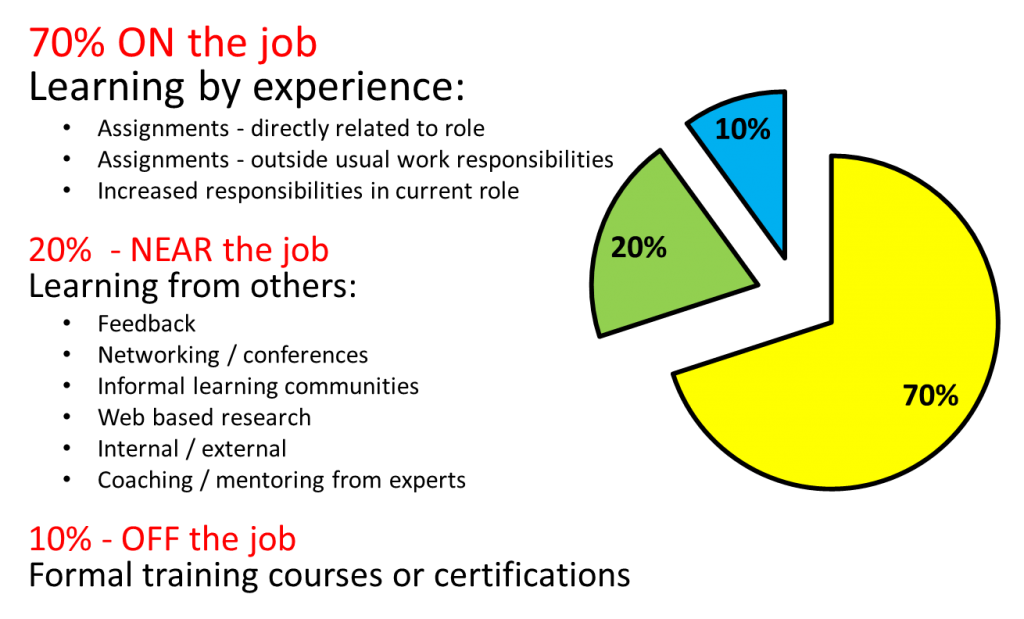This article is from Robert Demare who led a successful adoption of SFIA within DHL. In the article he challenges the approach many organisation have adopted to using 70:20:10.
I found this refreshing – it can seem that many organisations feel they are enlightened and leading edge because they are using a 70:20:10 approach. But what are they actually doing and is it enough?
My take-away from Bob’s article for IT organisations ….
- The 70:20:10 approach is potentially very powerful and can bring about a step change in the value IT organisations get from training
- However many organisations pay lip-service to the real intent of the 70:20:10 model
- Even those enlightened organisation adopting the 70:20:10 approach tend to continue to deliver in their comfort zone (the 10% and 20%) and hope that line managers will deliver the 70%
- We shouldn’t leave the 70% to chance. Given the realities of day to day business as usual work in IT organisations – it is unrealistic / negligent to assume that individual line managers have the headroom / bandwidth to construct effective 70% interventions.
- Consider creating a library of 70% experiences – ones which are proven to work in your organisation in delivering great value. Do this by helping individuals sharing knowledge amongst the community of professionals
- You should not have to re-invent the wheel – L&D should look to facilitate organisational learning not just deliver training
- Start with those “70%” experiences and work backwards from there – design the 20% and 10% solutions to support this
Highlights from Bob’s article:
- Many organizations claim to embrace the concept of 70-20-10 as a learning approach. The idea of 70% learning on-the-job, 20% learning through others, and 10% formal learning/training seems logical, thus the framework is pervasive in corporate learning. Unfortunately, many employees, managers, and even learning leaders misunderstand – and fail to leverage – the 70%.
- Too often learning and talent professionals think, “OK – so the on-the-job learning happens anyway, let’s focus on the parts we can actually plan like coaching and formal training.” The first problem with just letting the 70% “happen” is the lack of focus on getting the right experiences, particularly those that will stretch people to gain new skills and competencies. The second problem is that the “20” and “10” parts are often disconnected from on-the-job experiences.
- To address both problems, development should start from the 70%. On-the-job learning should be a very deliberate exercise in choosing experiences that help a person grow capability by planning job situations beyond his or her comfort zone. An individual development plan discussion should be focused on questions like, “What are two experiences in the next job you want to be in that you could try now?” Once the right experiences are identified, additional ingredients like other people (20%) and formal learning (10%) can be introduced as direct supports to the on-the-job elements. Support from others should be directly positioned to help the person through the experience. Similarly, formal training should be positioned to support specifically-chosen, on-the-job challenges.
- In addition, DHL has built a process to help ensure that on-the-job experiences are part of the DNA of learning. We have development guides outlining a menu of experiences for different job roles. These guides are based on the Skills Framework for the Information Age (SFIA), a leading IT competency model. Managers and employees can select experiences based on current roles or next-step roles. For example, a junior IT service leader might pick “lead customer service review” as an action that, combined with support from others, might be one of the right stretches to help build capability and confidence.
Getting the Most Out of 70-20-10 | Experience Driven Leader Development


